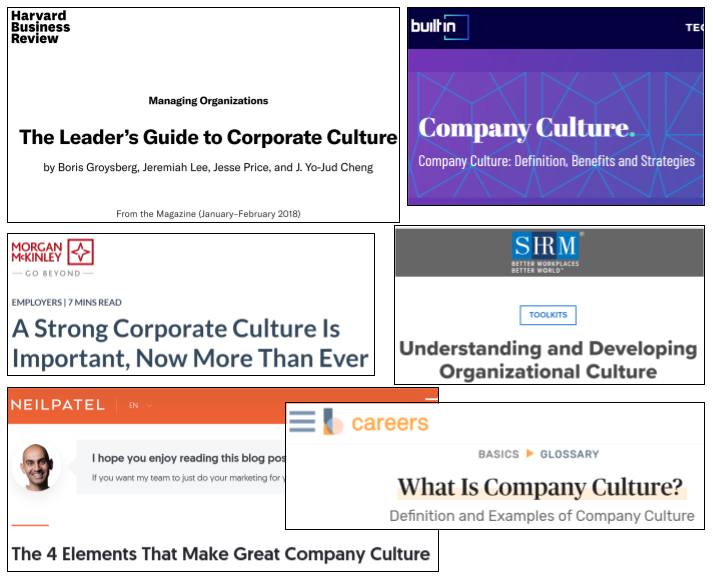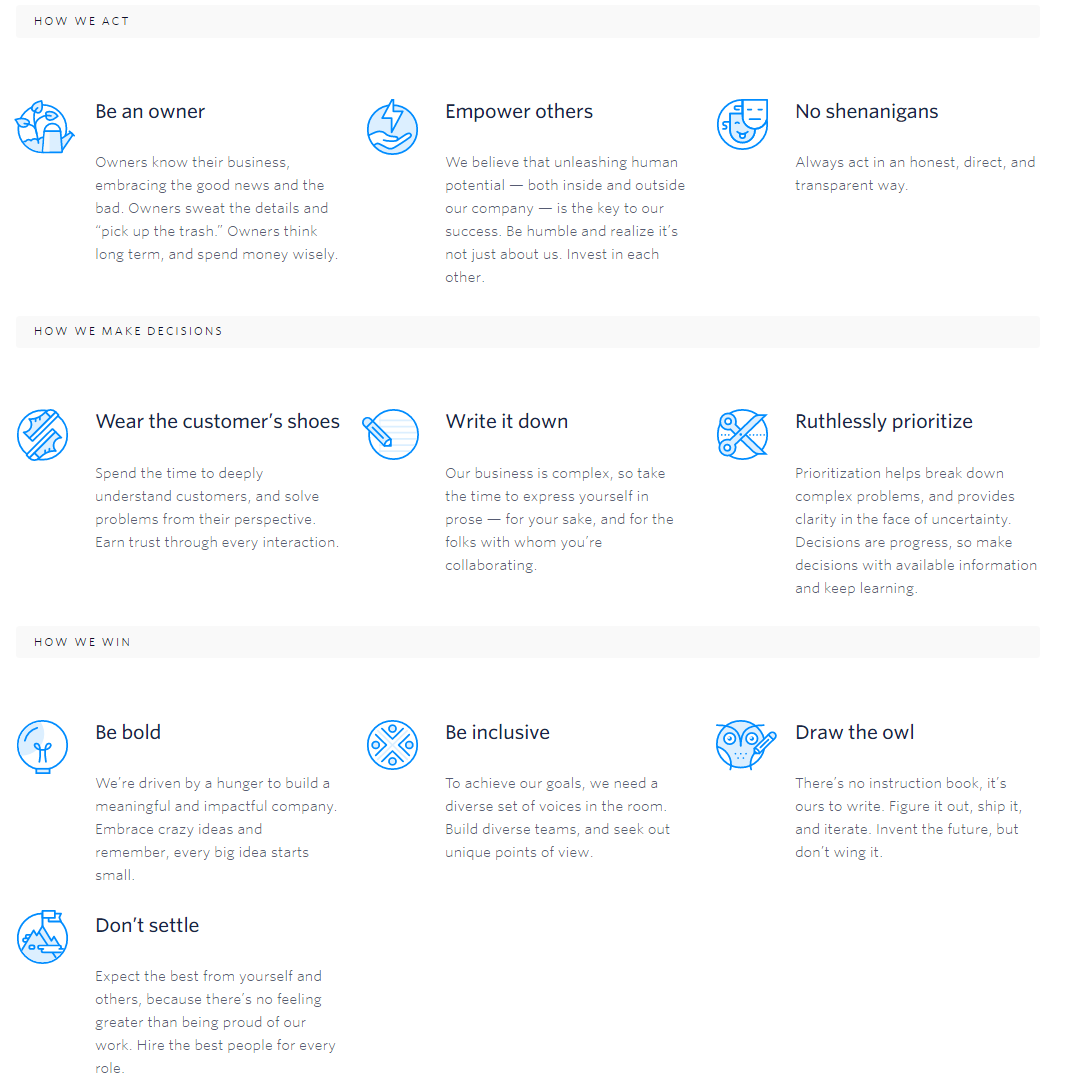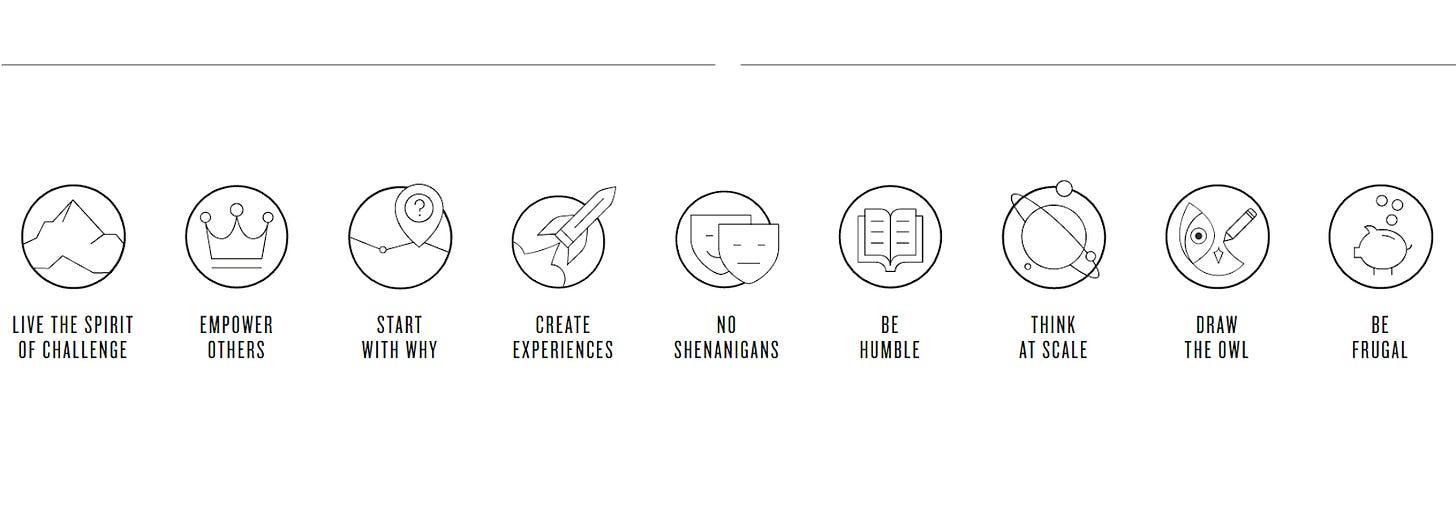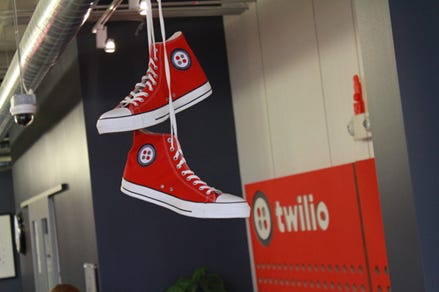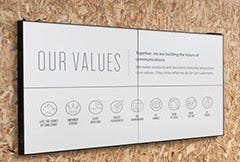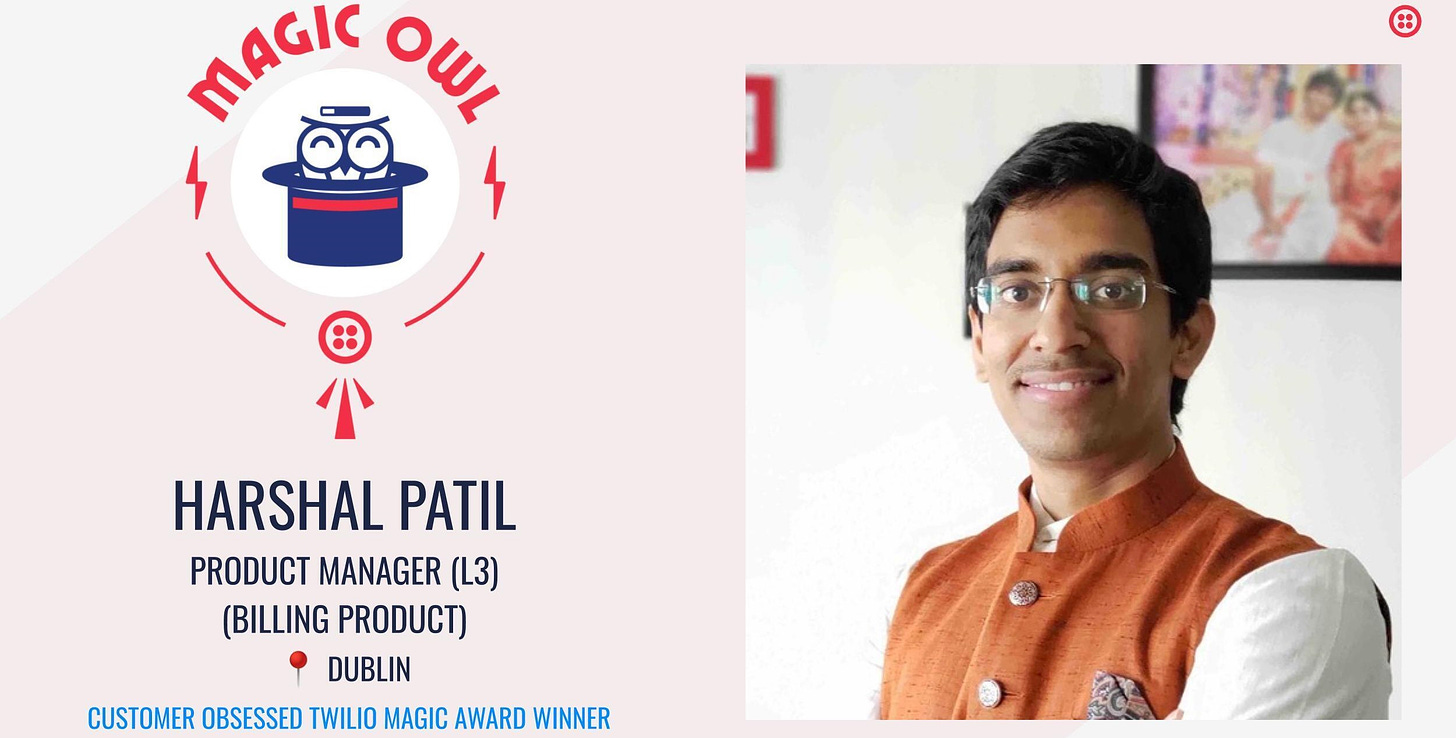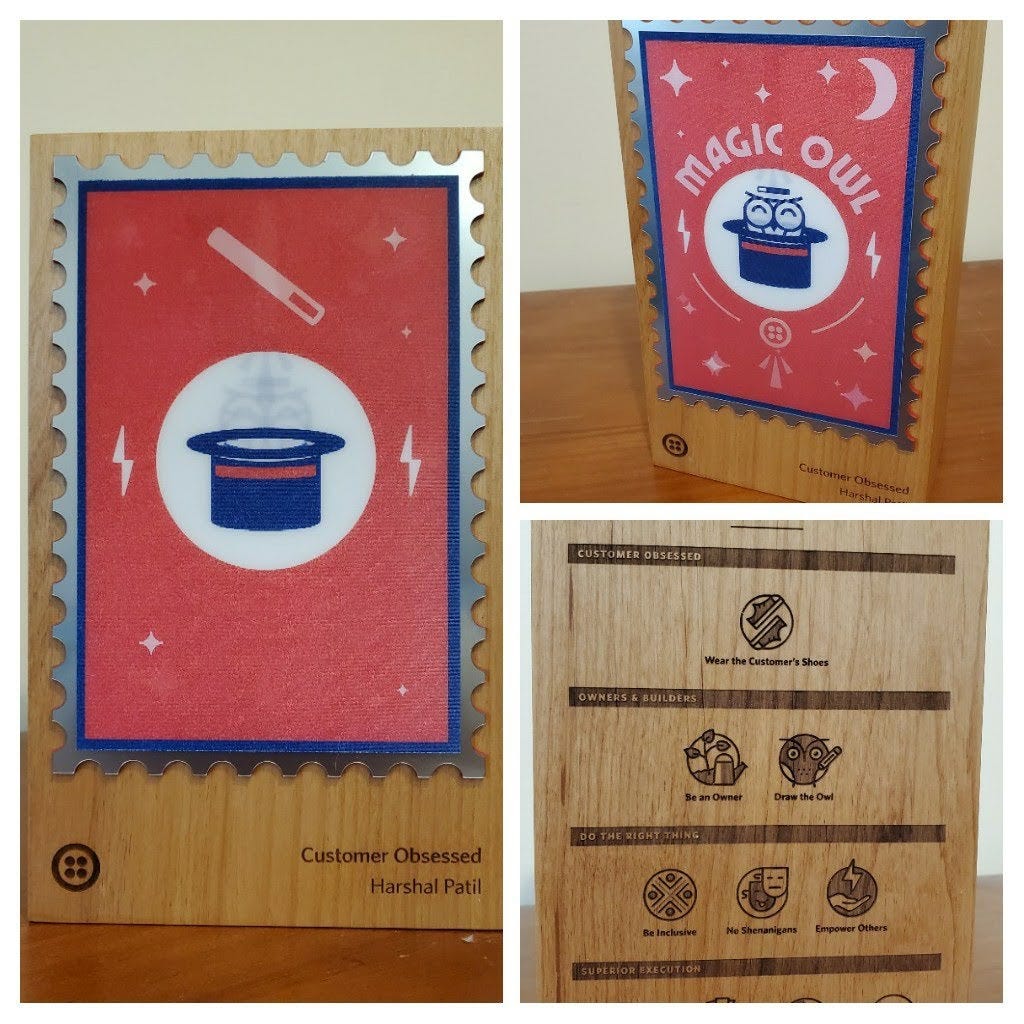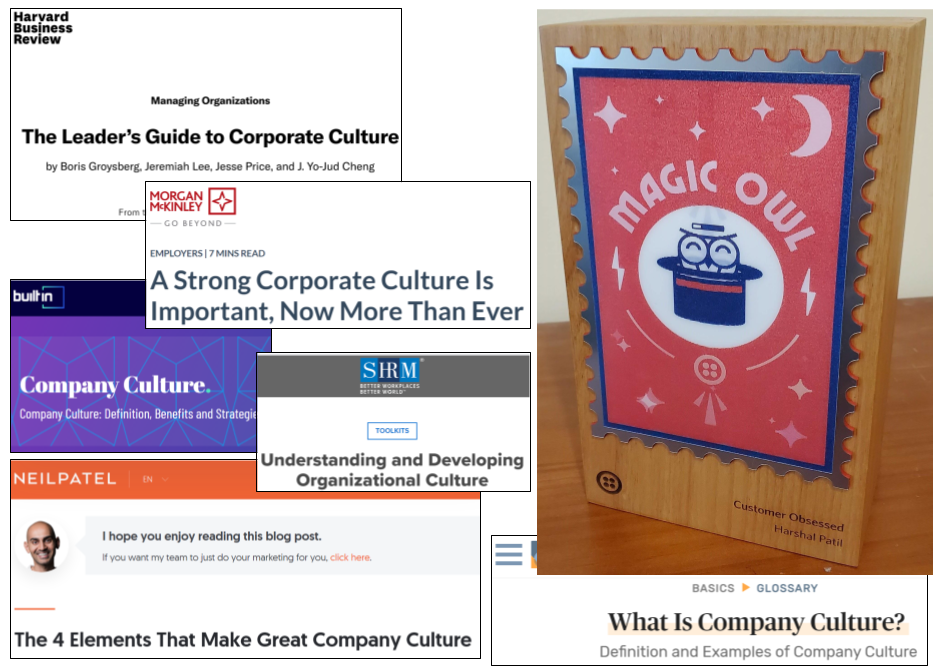

Discover more from Harmony
Building and nurturing company culture by mini-CEOs
An observation on building sticky energizing company culture through hiring, iteration, and recognition for PMs.
I recently received an award at Twilio that got me thinking about how a company builds its culture. I read about ways to foster a strong motivating culture in a company and tried to connect the dots between theory and observations. Culture has been an area of my interest for a long time since I’ve assumed the right culture will benefit an entrepreneur significantly so hopefully it’ll benefit me in the future.
I had 2 goals for learning about how culture can be fostered:
PMs (“mini-CEOs”) are said to have a dotted line leadership of their engineering and design teams, so PMs are partially responsible for fostering a good team culture. I wanted to understand the actions I can encourage within my department or teams to promote a set of values.
When evaluating a company I want to join or evaluating an interview candidate who wants to join Twilio, I want to know what signs to pay attention to, to understand the culture fit.
Disclaimer - Everything I’m writing is either a single perspective or can be found online on Glassdoor, LinkedIn, public documents, or Twitter. I haven’t brought up any company confidential information here. This may sound like a brag article on Twilio, but I am neither claiming it is great nor that it is lame - I just want to share my observations in my present company. Apart from my award, which I’m proud of, ignore any unintentional bragging about the company.
Observations of a strong culture
I’ve observed that Twilio has one of the strongest cultures out of companies I’ve worked in. It seems that a repetition of the cultural values in the day-to-day of employees and clarity in the values has helped foster it.
Firstly, there seems to be a defined set of values and simple explanations for each, which drives the clarity.
Second, I observed repetition through the following:
The cultural values are used as one measure of performance for employees in performance appraisals and candidates in interview panels.
Taking performance evaluation one step further, the cultural values are also used to give selective awards to employees who have embodied some cultural value(s).
Lastly, the values are referenced in documents and meetings when reminding someone to stay true to the values.
After writing down my observations and assumptions, I read expert recommendations on what defines culture and tips to foster it.
Research on fostering a strong culture
This is the least original part of my article since I synthesized research freely available online. Culture is claimed to be the set of behaviors that a company’s employees exhibit beyond rules or written guidelines. Culture is considered to be a constant through difficult times by filling up voids of communication although it should also change with times. It seems culture isn’t just the “values” but values can be made an important piece of the culture. Beyond values, it is suggested to have a mission and value for the company to target, which helps the employees stay cohesive.
Ways to foster culture include:
Hiring candidates who embody the culture so that there is a reinforcement of the culture instead of dilution. It seems 66% of candidates look for a cultural fit in their prospective employers.
Showcasing adherence to the cultural pillars top-down i.e. an employee can rely on their upper management including E-team to demonstrate the expected behaviors.
Encouraging feedback on the company and leadership’s actions, including on the culture.
Making the culture prevalent throughout the company.
Reinforcing the desired behaviors through non-financial incentives.
Following this understanding of how culture can be fostered, let’s connect the dots with observations from Twilio.
Values and simplicity
Although I thought the existence and simplicity of cultural values to be important, values are not the single most important aspect of a culture. I assume values are only a part of the culture in most companies. Perhaps Twilio has made values the core of their culture which is why the values seem rather important to me and others (Glassdoor). So maybe the company has decided that instead of having a culture in the company and writing down only a part of it, choosing the path of writing down a sufficiently wide set of values that encompass most of its culture.
Feedback and iterative values
The company collects feedback on the values from employees regularly through surveys and other approaches. In 2019, the values of the company went a large change. This was probably driven by feedback from the SendGrid acquisition. Here are the pre-2019 values (screenshot below) and here are the values since 2019 (screenshot above).
It would seem some values were removed and some were re-worded. Gathering employee feedback and changing values/culture when required is highlighted to be important to foster a strong culture so this action correlates well.
Omnipresent
The values also seem to be omnipresent. They are used as emojis on slack, you’ll find customer shoes hanging around the office, and display monitors with the cultural values being displayed. This connects to the idea of repetition I had mentioned and the research of making the values prevalent throughout the company - in the physical sense here.
Hiring and evaluating employees
Another research pointer was to hire candidates who embody the culture of the company. The omnipresent idea also expands to performance evaluations. Although I do not know what happens behind the scenes, I imagine it as a 2D axes where I’m judged on what I’ve accomplished but also how I have accomplished it. Similarly, interviewers try to understand the alignment of a candidate’s experiences with the cultural values.
Showcasing cultural champions
While the E-team showcases cultural adherence in their conversations and communications, the company also gives value-specific awards to a select few employees. These awards, named “Magic Owl” (or “Superb Owl” for teams), are announced in all-hands meetings, highlighted in team meetings, and shown in slideshows across the office monitors.
I was recently awarded the Magic Owl award for “Wearing the customers’ shoes”. I was glad to receive the award as being customer-centric is the best compliment I felt I could get as a Product Manager. It also reminded me of the customer problems my colleagues and I got to solve and how that needs to continue remaining an important pillar of my “how” of driving projects. To make the award more tangible, I was given a holographic wooden plaque with my name and the cultural value engraved on it, which works well in a pre-pandemic world to display on your office desk or in the covid19-era to keep in your zoom background.
It was also interesting to see the values grouped in a different way for the awards, probably because the award design committee realized some values are often demonstrated at the same time by employees or some values are too narrow to be given an award.
Overall, the effort of
showcasing employees who embody the culture,
highlighting the awardees across the company and in large meetings, and
providing positive reinforcement to the employees via a long-lasting memento
goes to strengthen the culture and aligns with the research we’ve read above.
Drawing conclusions
Some conclusions I came to:
When I am interviewing for a company, I will want to find out the culture of the company through their PR material and Glassdoor and highlight my cultural fit. This is similar to the “Company Preps” we discussed in this slide deck.
When I am interviewing candidates who got awards in their company, I will want to understand the cultural significance of the award. If it signifies the strengths I’m looking for, I will only then treat the award as a value-add to their profile.
When I am fostering a culture in my team, I will want to consider recognition of desired behaviors, showcasing the behaviors explicitly as leaders, and making the mission and vision of the team omnipresent.
When I am writing values for a startup I am part of (in the future), I will want to get feedback from all the employees to understand their perspectives of the culture to distill it down as a set of values.
Subscribe to Harmony
Harmony of Technology, Business, and Entrepreneurship. Featured on the front page of Hacker News. Trusted resource for 100s of PMs and entrepreneurs. I am building-in-public.





